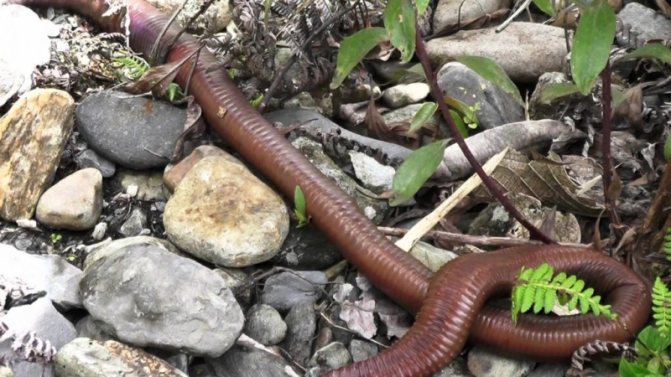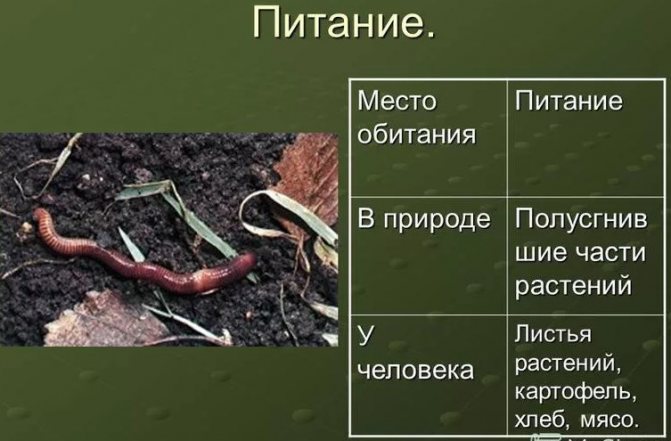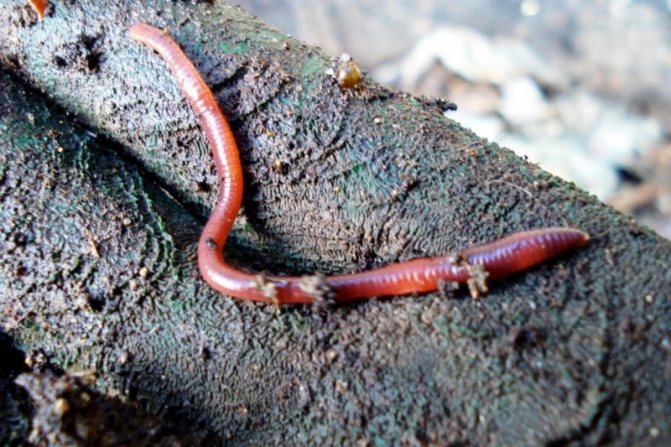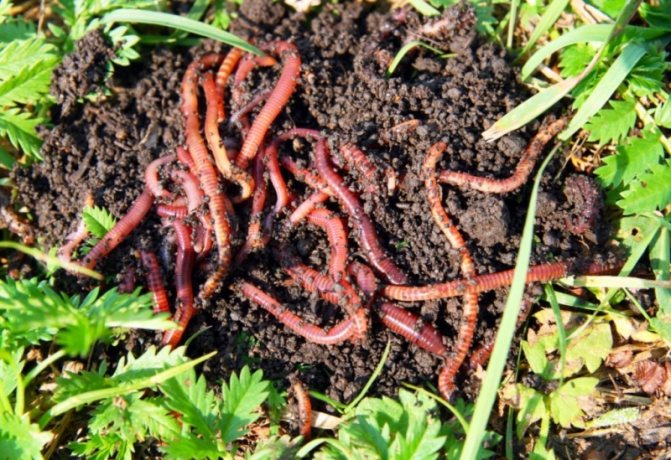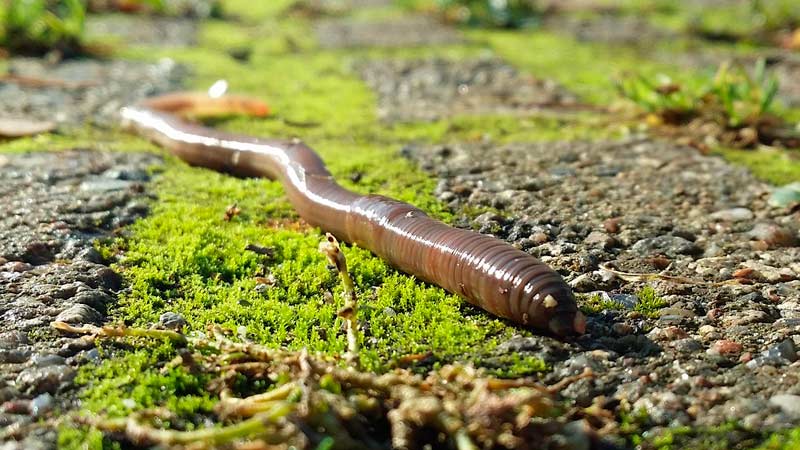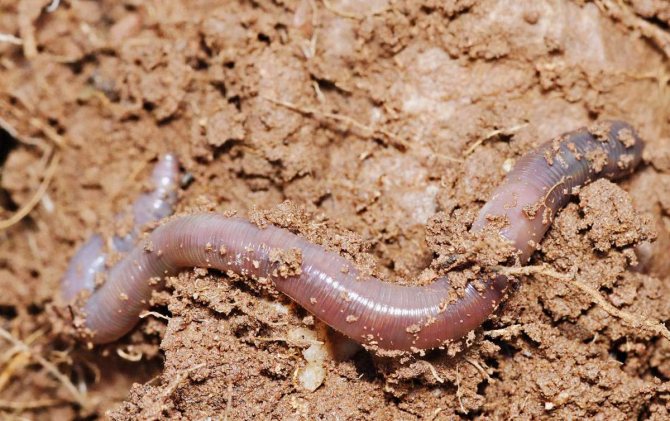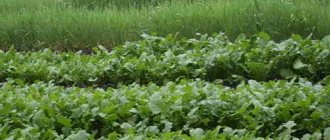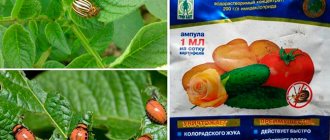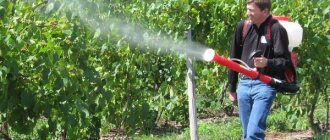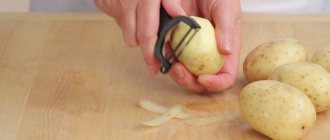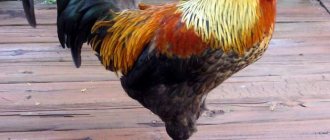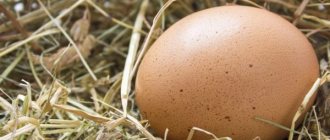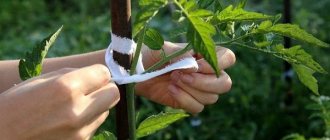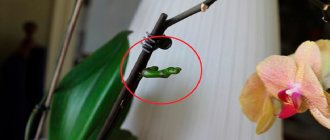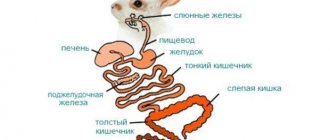This winter, a mole developed a vigorous activity on our site (in the Kuban). Piles of earth appear here and there: digs, tirelessly. I confiscate the earth from the heaps and put it on top of the beds (it is without weed seeds), and the mole's hard work even makes me happy. The more passages he digs up, the more larvae, slugs and other evil spirits will creep into the passages he dug, becoming a mole breakfast-lunch-dinner. His appetite is excellent and he does not recognize any hibernation. Of all the soil living creatures, I am sorry to give only earthworms to the mole. But they (for the most part) have already gone to winter in the lower layers of the soil. And why earthworms are dear to me, I will tell you in this article.
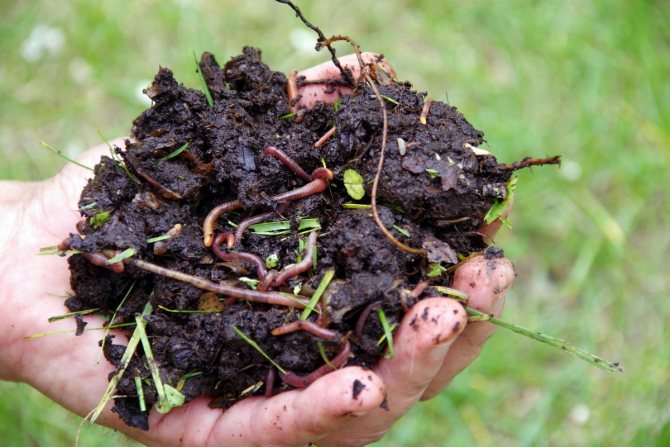
Earthworms - why are they needed and how to breed them for fertilizer production?
What are earthworms?
Earthworms are probably familiar to everyone - in the rain on the asphalt, tiles, paths there are a lot of them. The most common theory (far from the only one) is that in waterlogged soil, they have nothing to breathe, and they climb outside. But I like the other version - in the rain they have the opportunity to travel!
A thin film of water on the surface of asphalt, concrete, etc. allows them to painlessly migrate over relatively long distances. They also, probably, hope for a better life in a new place. In order not to disappoint them, after the rain I collect them on the paved areas and take them to where it will be good for them, and it will be useful for me.
On the planet, there are a lot of various earthworms, all sorts of different ones, ranging in length from 2 cm to 3 m. However, this three-meter horror lives only in Australia and our Russian soils are of no use. We have our own, adapted, smaller ones.
The most common are:
- litterthat are poking around in the upper, 10-centimeter layer of soil;
- soil-litterdeepening by 20 centimeters;
- and may get caught burrowingdigging their passages deeply, a meter or more.
Litter is most often collected by fishermen, and burrowing ones are found digging wells, pits, ditches. And the soil-litter is regularly cut with shovels by gardeners, which is not at all good for them (the worms), contrary to the popular belief about reproduction with a shovel.
It turns out that very few species are able to grow a new tail or a new head, and, for the most part, one thing. So by cutting it is most likely to get one very unhealthy worm and a dead second part.
Will two worms grow out of two parts of one? [edit | edit code]
Earthworms have the ability to regenerate lost segments, but this ability varies between species and depends on the degree of damage.
Stephenson (1930) devoted a chapter of his monograph to this topic, while H.E. Gates spent 20 years studying regeneration in various species, but "as little interest was shown," Gates (1972) published only a few of his findings, which nevertheless showed that it is theoretically possible in some species to grow two whole worms from a bifurcated specimen. Gates' reports included:
- Eisenia fet> [8].
- Lumbricus terrestris Linnaeus, 1758, replacing anterior segments as early as 13/14 and 16/17, but no tail regeneration was found.
- Perionyx excavatus Perrier, 1872, easily regenerated lost body parts, anteriorly from 17/18 and posteriorly to 20/21.
- Lampito mauritii Kinberg
, 1867 with forward regeneration at all levels up to 25/26 and tail regeneration from 30/31. The regeneration of the head was thought to be caused by internal amputation caused by infestation by Sarcophaga sp. Larvae. - Criodrilus lacuum Hoffmeister
, 1845, also has the ability to regenerate with the restoration of the "head", starting from 40/41 [9].
Since ancient times, humanity has paid special attention to such unsightly creatures as the earthworm. And scientists, in the person of Charles Darwin, decades later, studied their structure and significance in agriculture for many years. And not without reason. Indeed, with the onset of spring warmth, earthworms begin painstaking work and work, without knowing it, for the benefit of people.
What are they needed for?
Gardeners, summer residents, gardeners, as a rule, treat earthworms with respect. And this is completely true, given the great gratuitous assistance that they provide in improving the soil. Although the majority do not even suspect how much benefit earthworms bring to the soil!
The most obvious thing is that the worms loosen and mix the soil. Making their way into the soil layer, they push away soil particles and swallow dead plant parts. It is worth noting that worms feed only on dead parts of plants, without harming anything growing.
The holes left by the worms in the soil increase the air access to the roots (they also breathe). In addition, moisture condenses on the walls of the passages during temperature drops, thereby providing the roots of the plant, which are next to the passage, a kind of "drip irrigation".
For ease of movement and breathing (in worms, skin respiration), the body of the worm is covered with mucus. When the worm moves in the soil, the mucus partially remains on the walls of the passage, strengthening it. The mucus itself changes the soil around the course: in the 2-mm zone, the soil is slightly alkalized, nitrogen is added, the growth of some phytopathogenic bacteria and fungi is suppressed, while the growth of other types of bacteria is stimulated. Also, in the zones of the passages, the release of carbon dioxide, which is necessary for plants, increases.
Worms improve the structure of the soil not only by digging passages, but also by their own "stashes" - thrifty creatures drag particles of dead plants into their passages, making a separate burrow-storage. Eating, for example, a leaf, the earthworm eats up the pulp and leaves coarser veins that remain in the soil, improving its characteristics.
And finally, coprolites are the very waste products of earthworms, which, in addition to agricultural benefits, are a very profitable business.
Eating organic residues, the worms also swallow soil particles. Passing through the digestive tract, organic matter is processed by microorganisms living in the intestines of the worm, enzymes, and is partially absorbed. The rest comes out in the form of dense granules containing 5 times more nitrogen, 7 times more phosphorus and 11 times more potassium than the surrounding soil. And all this in a form accessible to plants!
In addition to mineral elements, coprolites contain natural antibiotics that inhibit the activity of pathogenic organisms, hormone-like substances that stimulate the germination and growth of plants, vitamins, amino acids and bacterial microflora useful for soil formation. In addition to the benefits actually contained in them, coprolites also have a stable structure due to gluing together with mucus. Therefore, in a humid environment, they dissolve gradually, they are not washed out of the soil by rain and watering.
Favorite food
The question of what earthworms eat is very interesting. Their "menu" is rather modest, the basis of the diet is formed by fallen decaying leaves, as well as other organic residues - roots, rotten pieces of wood. Worms have teeth in the stomach.Liquid-like soft food is absorbed through the pharynx, then muscularly pushed further into the goiter, and then into the stomach, where it is crushed and rubbed with the help of so-called teeth - hard growths similar to the incisors we are used to. With the contraction of the gastric muscles, these hard dentate processes are set in motion. Digestion takes place in the intestines.
Undigested food debris is deposited in the soil. In one day, an adult earthworm can process a pound of land!
How to attract earthworms to the site?
That is, earthworms must be cared for, cherished and enticed from neighbors. It is clear that if the worms feed on organic matter, it must be present in the soil (or better, on the soil surface). Mulching is one of the best options.
Somehow, planting roses in a new section closer to the porch in the spring, we (if in all fairness - my husband) could hardly dig holes of the required depth: in that place there was compressed clay with very fine gravel. It is also dry due to the slight slope. They planted. I sighed over them, covered the soil around with a layer of newspapers, and covered it with mown grass on top. When the grass has dried up - another layer of newspapers and a layer of grass. And on top - bumps. Already in the fall, replanting one rose (re-grading) under a layer of mulch, I found worms that had settled down well there and eaten. And digging much easier.
There was also a good option: strawberries were harvested, the bushes were pulled out, together with the weeds, they were left to rot in the garden. From above they threw mowed grass all summer, ash was poured there from the barbecue and again grass. It was pouring rain. In the fall, a huge number of worms swarmed under the thin, top, dried layer of grass in the completely processed organic matter. The bed was ready for planting anything - solid vermicompost!
Worms don't like acidic soil. Although there are some subtleties here: our friends in the Khabarovsk Territory had their dacha practically on a peat bog - lingonberries, blueberries, local rhododendrons grew well. So they had worms, only not small pink ones, but large ones, with a finger thick, gray-pink. That is, the information that worms do not live in acidic soil is, apparently, about the most common. They also do not like highly calcareous soils.
They also do not like dryness: when it is dry, they go into deeper layers, like in winter. But they don't like flooding either. In terms of environmental requirements, they are similar to most cultivated plants - they prefer moderation, without extremes.
The compost heap is a paradise for worms, a kind of worm incubator: warm, humid, loose, sea organics - live and be fruitful! Approximately such conditions are created for them in the production of vermicompost.
Despite the fact that worms are hermaphrodites, that is, they have both female and male genitals, they most often need a partner. Apparently for the exchange of genetic material. Although not all species and not always, some are self-sufficient. As a result of the sexual process, the worms will throw off the cocoon formed by mucus with seeds and eggs. The actual fertilization and development will take place inside the cocoon in the soil.
Cocoons are vulnerable - by loosening, digging, a huge number of them are destroyed, reducing the number of volunteers. If you do not climb into the soil, young worms will get out of the cocoons after about 3-4 weeks. And after 3-4 months they will grow to an adult state and will live for 6 or 7 years if no one eats them. They can bear offspring in good conditions every decade.
And many people love to eat worms! Moles that make whole "worm warehouses", frogs, toads and snakes, lizards and birds. Fish also - with the help of fishermen. So it is in the interests of gardeners to breed as many worms as possible - so that there is enough for everyone and for everything.
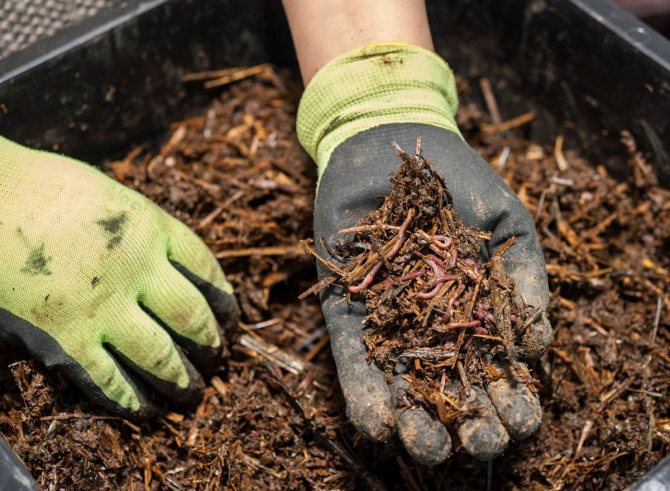

The compost heap is a paradise for worms. <>
Significance to humans [edit | edit code]
In Western Europe, washed earthworms or powder from dried worms were put on wounds to heal them, for tuberculosis and cancer, a tincture of powder was used, a decoction was used to treat ear pain, worms boiled in wine - jaundice, oil infused with worms - fought against rheumatism. The German physician Stahl (1734) prescribed a powder of dried worms for epilepsy. The powder was also used in Chinese traditional medicine as part of a drug to get rid of atherosclerosis. And in Russian folk medicine, the liquid that flowed out from salted and heated earthworms was buried in the eyes in case of cataract [6].
Read also: Red bell pepper benefits and harms
Large species of earthworms are eaten by Australian aborigines and some peoples of Africa.
In Japan, it was believed that if you urinate on an earthworm, then because of this, the causal site may swell [7].
How to breed worms for fertilizer production?
The worms are not so small, it is not difficult to catch for different purposes (fishing, for chickens, for experiments). What in his time was still fond of Darwin - put various experiments on harmless and defenseless creatures. Okay, at least for the good of the case.
He had many followers in this matter, they found out a lot of interesting things about worms. In particular, if simple earthworms are placed in very good conditions (a lot of food, moisture, warmth), after several generations a population of large, well-eating and well-breeding worms is obtained. That is, as it were, pets.
They, processing, for example, kitchen waste, will give out from the other end of the body a lot of remarkably useful coprolites - a natural, environmentally friendly universal fertilizer for all crops. This is how the California Worms and the Russian Prospectors were bred. Californians have been cultivated for longer, they are more voracious and productive, but ours are fitter, and their potential is higher.
And it allows all interested parties to have quiet and incredibly productive pets in their home / garage / basement. Which will eat all the vegetable waste, paper, and even fabric and leather - but not quickly. At the same time, numerous offspring and a noticeable amount of useful coprolites will be produced.
The technology is quite simple, you will need:
- warm room;
- at least two plastic vegetable boxes;
- a piece of thick film;
- a bucket or two.
One box needs to be covered with foil and covered up to half with garden soil with caught worms. Additionally, collect a couple more buckets of earth, without worms. You can collect earth and worms in the forest along with rotten foliage. The ground should be moist, but not wet. Add 200 grams of crushed organic waste (cleaning, sleeping tea leaves, banana skins, etc.) to the box with worms, mix.
The box is placed in a warm place, you can cover it with a newspaper. Check out in a couple of weeks - how are they doing? If organic matter is not visible, add the same amount on top. Then, when juveniles appear, the processing process will go faster, and organic matter will have to be added more often and more, pouring a little earth from the bucket. Moisten if necessary.
As soon as the level of the resulting compost equals the top of the box and is even a little "with a slide", a second box is placed on top, pressing down, and organic matter sprinkled with earth is placed in it. The worms themselves will get over there through the lattice bottom.
Then everything is the same, adjusted for the processing speed. As soon as the upper box is filled and processed, the lower one can be removed, the ready-made vermicompost can be used from there (for seedlings mixed with soil, for indoor flowers, in a greenhouse), in the empty box without a film, put organic matter with soil again and put it on a box with worms.
Run surplus worms in the spring in the greenhouse, in greenhouses, in the beds.Let the "incubator" itself continue to work, producing fertilizer and worms for settling on the site.
Self-breeding
It is possible to breed worms at home for use on fishing, feeding pets - hedgehogs, bats, birds, as well as for obtaining vermicompost - a universal and environmentally friendly fertilizer. Vermicompost is a unique product made from recycled earthworm waste.
Breeding worms is available to everyone, simply and without investment. what for this it is necessary:
- Collect local worms in any convenient place - at the dacha, in the forest, in a nearby park. The easiest way is to dig a small hole and fill it with waste attractive to worms - rotting leaves, fruit peels, vegetables. Drizzle with water, cover with a board or cardboard. After about a week, you can come to collect the worm "harvest". Several individuals must settle near the pit.
- Choose a container in which the home farm will be located. For this, simple options are suitable - for example, an enamel basin, saucepan or bucket. Prepare the dishes - you need to drill several holes in the bottom, put a tray under the container to drain excess water. Fill the tray with sand or sawdust.
- The wormhole should be placed in a room with an average temperature of 15-20 degrees, preferably in a dark place. The thermometer should not drop below 4 degrees, otherwise the worms will simply go into hibernation and will not do their job.
- Filling the container. For this, simple and affordable fillers are suitable - sawdust, straw. A filler is poured at the bottom of the farm, vermicompost is on top (you can buy it at any flower shop). The height of this layer is about 10 cm. The next layer is fodder: fruit and vegetable waste, sleeping tea, coffee grounds. And finally, vermicompost (also sold in flower and hardware stores) - about 2 cm thick. The dwelling for the worms is ready!
- Population of caught worms. Do not forget to feed them, they, like other pets, need appropriate care. The earthworm feeds on vegetables and fruits, waste (except for potato peels, citrus fruits, garlic, salty foods). You can use oatmeal. And also the worm requires regular watering. It should be moistened abundantly with each feeding. Use water that has settled for about 3 days.
Growing Heuchera flowers in garden landscaping
These simple rules will allow you to make a homemade vermi farm. These representatives of the "belt worms" class are unpretentious in care and nutrition, so it will not be difficult to dilute the required amount. An unusual farm will help show children what life cycle their familiar invertebrates go through.
Who else lives in the soil?
The well-being of the soil is provided by numerous soil inhabitants, but most of them are so small that we do not notice them. Healthy and fertile soil is full of life: bacteria, fungi, algae, protozoa, mites, springtails, larvae, worms, ants, nematodes, millipedes, enchitreids and much more.
All depend on each other, many exist in symbiosis. Manipulations with herbicides, fungicides, insecticides destroy the established bonds and the vacated living space very quickly takes up aggressive forms, most often pathogenic.
Worms feed on dead organic matter, but they will not be able to do this without soil microorganisms. So, beloved by many, clean land without a single weed is half dead, the biocenosis is disturbed in it, it requires constant labor and investments in the form of fertilizing, loosening, weeding, watering. Gardeners work instead of soil biota. And vice versa - in the presence of organic matter in the zone of plant roots, all soil living creatures will actively work there, providing the plants with everything they need.
Gardening and horticulture methods are, of course, a private matter for everyone.But in the Red Book of the Russian Federation there are already more than a dozen annelids, and behind them in the chain are all those who feed on them.
Population increase
Currently, gardeners and people who are engaged in organic farming practice many ways to improve soil fertility. One of them is the reproduction of invertebrates. When performing such a task, it is customary to introduce various organic matter into the soil, as well as carry out mulching. The surface layers are treated with humus, fallen leaves, manure, compost and other similar substances.
Some gardeners try to breed animals on their own. This action is not considered too difficult, so even beginners can do it. The key is to ensure optimal access to foodadequate humidity, sun protection and plenty of free space. Successful breeding of a worm farm is possible in early spring or early summer, when the air temperature reaches optimal levels. During this period, the worms have time to mate and grow stronger before the coming winter.
Reproduction and life expectancy
The ability to give offspring appears when an individual reaches six months of age. The incubation period depends on weather conditions and lasts 1-5 months. They are not divided by sex - asexual hermaphrodites, reproduce by cross fertilization. They find each other by smell, on warm humid evenings.
The reproductive organ is the widest belt on the body, several times larger than the rest. In it, the eggs are fertilized and developed. They lay eggs in the ground in cocoons containing about twenty future worms each. In three to four months, the worms from the larvae grow to the size of an adult.
Lifestyle and habitat
By way of life, they are divided into those who live on the surface, hiding in a layer of last year's foliage, never going underground more than 15 cm. Burrowers can burrow into the ground to a depth of more than a meter. At the same time, their holes in the ground help to mix and loosen its fertile layer. The main activity of these invertebrates occurs at night, when they feed intensively.
Moving underground, they constantly loosen the soil, helping the penetration of oxygen and moisture to the roots. Plants in such soil feel much better and develop well. The movement of the soil as a result of their vital activity has a positive effect on its quality. They enrich the soil with humus, their presence in it can be a good way to determine fertility.

